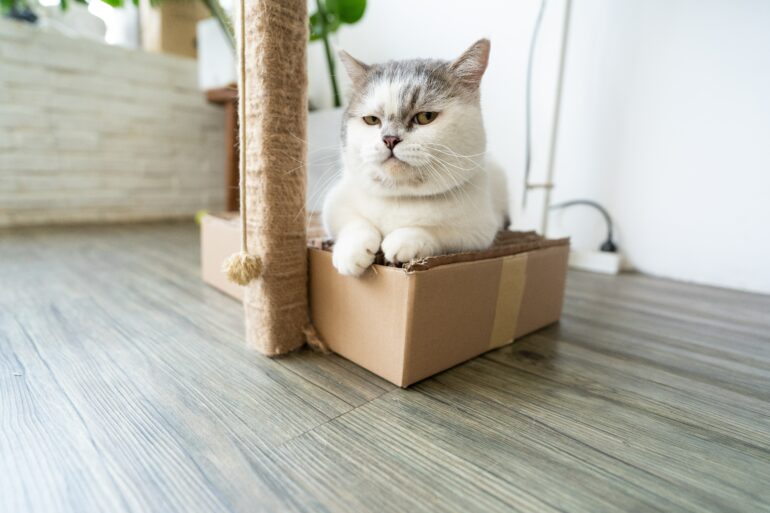In today's world, where sustainability and eco-friendliness are gaining importance, making conscious choices even for our pets is crucial. One such choice is opting for plant-based cat litter. This article will explore the numerous benefits of plant cat litter, different types available, tips for usage and how it compares to traditional clay litter. Let's dive in and discover why plant cat litter is an excellent eco-friendly choice for your feline companion.
Introduction
What Is Plant Cat Litter?
Plant cat litter, as the name suggests, is made from natural, plant-based materials. These litters are an alternative to the conventional, clay-based litters, which have significant environmental and health concerns. Plant cat litters are designed to be biodegradable, sustainable and safe for both cats and humans.
Importance of Eco-Friendly Choices
Choosing eco-friendly options for our pets is essential for several reasons. First, it helps reduce our carbon footprint and overall impact on the environment. Second, it promotes the well-being and health of our pets, as they come in direct contact with the litter on a daily basis. Finally, by opting for eco-friendly choices, we support the sustainable production and use of resources, creating a better future for all.
Benefits of Plant Cat Litter: Natural and Biodegradable
Plant cat litters are typically made from renewable and biodegradable materials. They often use ingredients like wood, corn, wheat, pine or bamboo, which are natural and sustainable resources. This means that when you dispose of the litter, it will break down naturally without harming the environment.
Reduced Carbon Footprint
Compared to traditional clay litters, plant cat litters have a significantly lower carbon footprint. Clay litters are typically mined through destructive methods and require a vast amount of energy for processing. Plant litters, on the other hand, are derived from renewable sources and go through a more eco-friendly manufacturing process, resulting in a reduced environmental impact.
Safe for Pets and Humans
Plant cat litters are generally safe for both cats and humans. They do not contain harmful chemicals or additives that can be potentially hazardous when inhaled or ingested. This is particularly important as cats tend to groom themselves, and any residue from the litter can end up in their digestive system or on their fur.
Excellent Odor Control
One of the significant advantages of plant cat litter is its excellent odor control properties. Many plant litters are naturally absorbent and help eliminate unpleasant smells. For example, wood-based litters have natural enzymes that neutralize odors, while corn-based litters often have natural clumping properties that encapsulate odor-causing substances.
Dust-Free and Hypoallergenic
Plant cat litters are generally dust-free, which is beneficial for both cats and humans. Dust can be a respiratory irritant, causing discomfort and potential allergies. Plant litters are often formulated to minimize dust, ensuring a cleaner and healthier environment for your cat and your family.
Easy To Clean and Maintain
Plant cat litters are designed to be user-friendly when it comes to cleaning and maintenance. Many varieties offer easy clumping or quick absorption, making it simpler to scoop and dispose of waste. Additionally, some plant litters are flushable, allowing for convenient and hygienic waste disposal.
Types of Plant Cat Litter
There are several types of plant cat litters available in the market, each with its unique characteristics. Let's explore some popular options:
Wood-based litter
Wood-based litters, such as those made from sawdust or recycled paper, are known for their absorbency and natural odor control properties. They are often soft on your cat's paws and provide a pleasant scent.
Corn-based litter
Corn-based litters are natural, clumping litters that are biodegradable and safe for cats. They have excellent odor control and are generally more lightweight than traditional clay litters.
Wheat-based litter
Wheat-based litters are often made from recycled wheat by-products. They clump well and are highly absorbent, effectively controlling odors. Wheat litters are gentle on sensitive paws and are less likely to track around the house.
Pine-based litter
Pine-based litters are made from kiln-dried pine pellets or shavings. They have a natural pine scent, which helps control odors. These litters are highly absorbent and offer good moisture control.
Bamboo-based litter
Bamboo-based litters are a newer addition to the plant litter market. They are sustainable and biodegradable, with excellent odor control properties. Bamboo litters often clump well and are soft on your cat's paws.
Tips for Using Plant Cat Litter
To ensure a smooth transition to plant cat litter and maintain a clean litter box, consider the following tips:
Transition your cat to plant litter
When switching from traditional litter to plant litter, it's essential to introduce it gradually. Mix a small amount of the new litter with the old litter, gradually increasing the ratio over time. This allows your cat to adjust to the new texture and scent.
Properly set up litter box
Ensure you have an appropriately sized litter box for your cat. The litter box should be large enough for them to move comfortably and dig. Place the litter box in a quiet and easily accessible area. Provide multiple litter boxes for households with multiple cats.
Set up scooping and cleaning frequency
Regular scooping is essential to maintain cleanliness and prevent odors. Scoop the litter box at least once a day, removing solid waste and clumps. Depending on the number of cats and the litter's absorbency, you may need to change the litter more frequently.
Dispose and compost the litter
When disposing of plant cat litter, it's essential to follow the manufacturer's guidelines. Some plant litters are flushable, but others require proper disposal in trash bins. If you choose to compost, ensure the litter is compostable and safe for use in your composting system.
Compare Plant Litter With Environmental Impact of Clay Litter
Traditional clay litter has a significant environmental impact. Clay is a non-renewable resource that requires strip mining, causing habitat destruction. The processing of clay litter also consumes substantial energy and releases greenhouse gases.
Health concerns with clay litter
Clay litter contains silica dust, which can be harmful when inhaled by both cats and humans. Prolonged exposure to silica dust can lead to respiratory issues. Additionally, clay litters often contain added chemicals and fragrances that can cause allergies or sensitivities.
Performance comparison
Plant cat litters are generally comparable in performance to traditional clay litters. They offer excellent odor control, clumping abilities and easy maintenance. The choice of the best litter depends on your cat's preferences, your cleaning routine and any specific requirements you may have.
Conclusion
Choosing plant cat litter is a responsible and eco-friendly choice for both your cat and the environment. With natural and biodegradable properties, reduced carbon footprint, excellent odor control and safety for pets and humans, plant litters provide numerous benefits. By making the switch, you contribute to a more sustainable future while ensuring a clean and comfortable litter box for your beloved feline companion.
Frequently Asked Questions
Is plant cat litter safe for kittens?
Yes, plant cat litter is generally safe for kittens. However, it's essential to choose a litter that is suitable for their age and development. Consult with your veterinarian for specific recommendations.
Can plant litter be flushed down the toilet?
Some plant litters are flushable, but not all. Always check the packaging and follow the manufacturer's instructions for proper disposal. If in doubt, it's safer to dispose of plant litter in the trash.
How often should I change plant cat litter?
The frequency of changing litter depends on several factors, including the number of cats, litter type and your cat's habits. It's generally recommended to scoop the litter box daily and completely change the litter every 1–2 weeks.
Will plant litter attract bugs or insects?
Plant cat litters are not more likely to attract bugs or insects than traditional clay litters. However, it's important to maintain proper hygiene and regularly clean the litter box to prevent any issues.
Can plant litter be used with automatic litter boxes?
Yes, many plant litters are compatible with automatic litter boxes. However, it's crucial to check the manufacturer's instructions to ensure compatibility and proper functioning.

